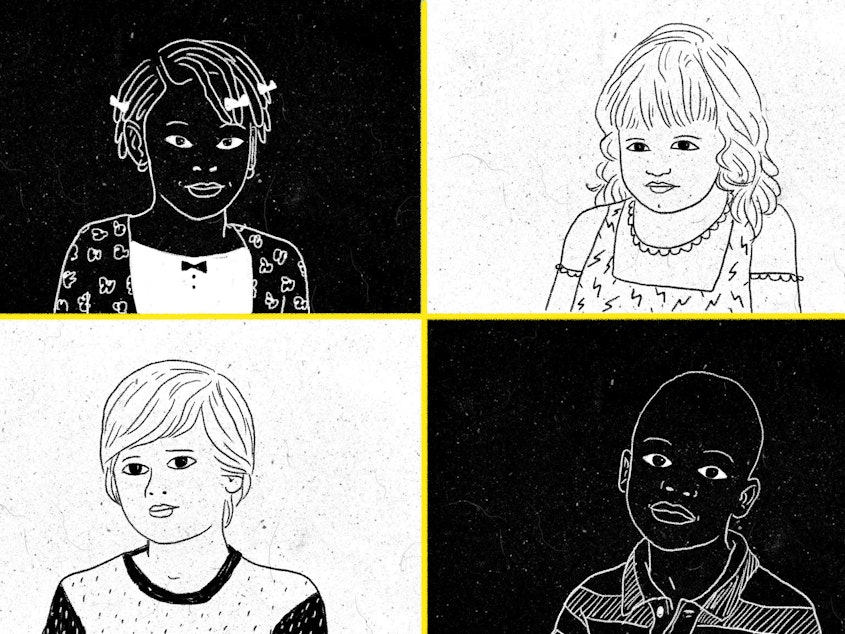Suspensions Are Down In U.S. Schools But Large Racial Gaps Remain

Students in U.S. schools were less likely to be suspended in 2016 than they were in 2012. But the progress is incremental, and large gaps — by race and by special education status — remain.
This data comes from an analysis of federal data for NPR in partnership with the nonprofit organization Child Trends. And it comes as the Trump administration is preparing the final report from a school safety commission that is expected to back away from or rescind Obama-era guidance intended to reduce racial disparities in school discipline.
The commission, led by Education Secretary Betsy DeVos, is expected to release its final report in the coming days.
The Child Trends analysis highlights findings that when a student disrupts class, a school can disrupt that student's education — and his or her entire life. Research suggests suspension and expulsion, arrests and referrals to law enforcement, is associated with dropping out of school and going to jail. All of these consequences happen more frequently to black students, even in preschool. Sometimes they are punished more harshly for the same behavior as white students; often for nonviolent offenses. Students with disabilities are also punished more often and more harshly.
In 2014, with this body of evidence growing, the U.S. Department of Education issued detailed guidance on "how to identify, avoid, and remedy" what they called "discriminatory discipline." They promoted alternatives to suspension and expulsion, and opened investigations into school districts that had severely racially skewed numbers.
In the wake of that guidance, more than 50 of America's largest school districts instituted discipline reform. More than half the states revised their laws to try and reduce suspensions and expulsions. And, our indicators are, they succeeded.
At NPR's request, the nonprofit Child Trends analyzed the federal Civil Rights Data Collection, which includes reports from every public school in the nation, over three years — the 2011-2012, 2013-2014, and 2015-2016 school year. They caution that this analysis, which is based on numbers self-reported by schools, can't cover every possibility — for example, if schools are calling parents to pick students up instead of putting an official suspension on the books. Or if they are suspending fewer students, but suspending them for longer periods of time.
Still, they documented some heartening changes between 2012 and 2016.
The proportion of all students suspended from school at least once during the year fell from 5.6 percent to 4.7 percent.
Among high school students, the percentage suspended fell even more, from 9.6 to 7.6 percent.
Suspension rates fell around the country, in each of the biggest-population states. Only one state, Mississippi, saw a persistent increase year by year.
Hispanic students experienced the largest decrease --a 30 percent drop in suspensions.
Suspension rates fell faster for those most often suspended — Black students and students with a disability.
But, on the flip side:
Black high school students are still twice as likely (12.8 percent) to be suspended as white (6.1 percent) or Hispanic (6.3 percent) high school students.
And students with a disability are also twice as likely (12.8 percent) to be suspended as those without a disability (6.9 percent).
"This progress is incremental and large gaps by race and disability still remain," says Kristen Harper, who directs policy development for Child Trends. She says there's "a long way to go" and a continuing need for federal leadership. "Any efforts that could suggest that these issues are not important could undermine the work of states and districts."
We should note that NPR previously collaborated with Child Trends on a look at the Civil Rights Data Collection's school shooting indicator. That analysis found serious problems with the data reported. But Harper says that the out of school suspensions indicator is far more robust and reliable, partly because the data has been collected for longer, and also because suspensions are more common than shootings, so a few data entry errors are less likely to skew the overall trend. [Copyright 2018 NPR]



